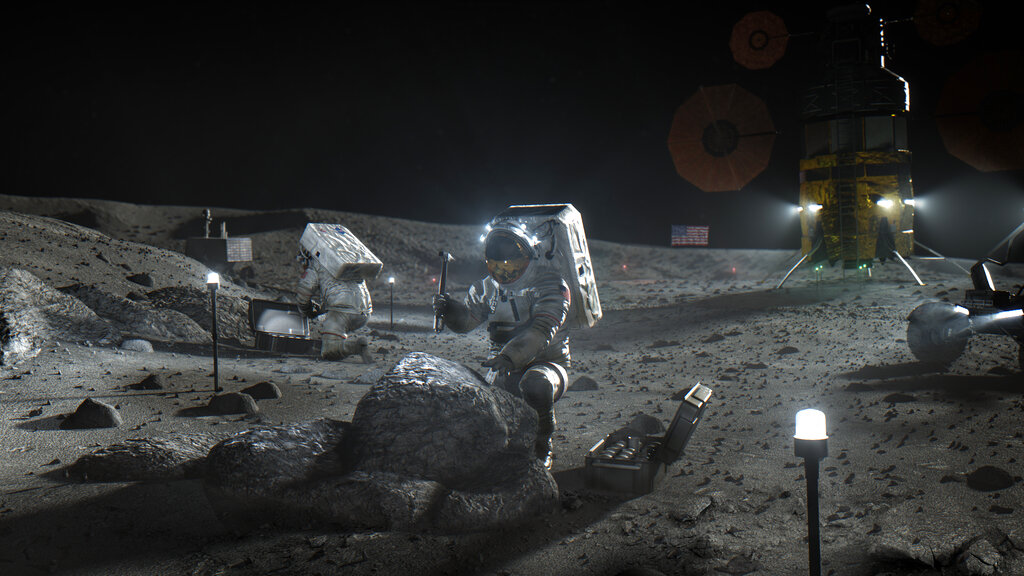In a giant leap for womankind, NASA announced plans to send the first woman to land on the Moon in 2024.
The National Aeronautics and Space Administration has outlined plans to make its first return to the moon since the Apollo lunar mission in 1972, with its sights set on exploring new regions of the Earth’s satellite. As a part of the program called Artemis, which calls for $28 billion in funding through 2025 for its initial phase, NASA will be sending the first woman, and the next man, to the moon for a week-long expedition.
In all, a dozen people — all American men — have walked the moon. On July 20, 1969, Neil Armstrong and Edwin “Buzz” Aldrin became the first two human beings to walk the Moon’s surface as a part ofNASA’s Apollo 11 lunar landing. On June 18, 1983, NASA Astronaut Sally K. Ride became the first American woman to go to space aboard the Space Shuttle Challenger on mission STS-7.

Prior to the planned 2024 Moon landing, NASA will launch its powerful new rocket, the Space Launch System (SLS), and the Orion spacecraft on two test flights around the Moon to check its life support, communication and performance capabiliites. Both are almost ready for their first integrated launch. The SLS’ core stage and attached engines are currently being tested and are expected to have a critical hot fire test later this fall.
The first mission, Artemis 1, is on track to happen in 2021 without astronauts. Two years later, NASA plans to fly Artemis 2 with crew members. Then, in 2024, Artemis 3 will mark the first return of humans to the moon surface in more than 50 years.
The astronauts will be wearing modern spacesuits to allow for greater flexibility and movement than those of the Apollo predecessors. They will collect samples and conduct a range of space experiments. As part of the Artemis program, both humans and robots will be searching for, and potentially extracting, resources such as water that can be converted into oxygen and fuel.
“We’re going back to the Moon for scientific discovery, economic benefits, and inspiration for a new generation of explorers,” NASA administrator Jim Bridenstine said in a press release. “As we build up a sustainable presence, we’re also building momentum toward those first human steps on the Red Planet.”
Is it too soon to start planning a Moon landing watch party?
This story originally appeared on Simplemost. Checkout Simplemost for other great tips and ideas to make the most out of life.


